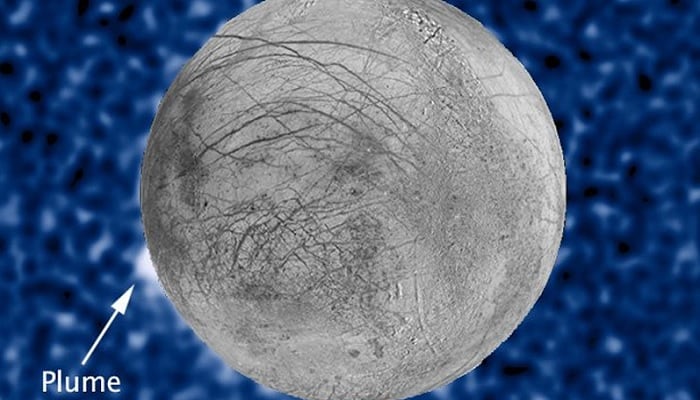Juno ‘spots' water plumes on Jupiter's icy moon Europa
Europa may be a habitable water-world, new Nasa data suggests
May 17, 2024

The distortions in the frozen features of the surface of Europa, the fourth largest of Jupiter's 92 natural satellites, suggest something truly like a mighty ocean is astir under its thick icy crust.
A recent fly-by visit by Juno, the Nasa spacecraft, strongly indicates potential plume activity in spots where saltwater might have recently broken through the ice shell.
This discovery could make it possible for future missions to sample the internal ocean without needing to land on the icy water world.
The data offer a second round of tantalising hints that plumes of water vapour are erupting from Europa’s mysterious interior.
According to Nasa, Like Saturn's moon Enceladus, Europa is geologically dynamic, meaning both moons generate heat inside as their solid layers stretch and flex from the gravitational tug-of-war with their host planets and neighbouring moons.
"This, instead of heat from the Sun, keeps subsurface water from freezing on these ice-covered moons. The heat may also help produce or circulate life’s chemical building blocks at the seafloors, including carbon, hydrogen, oxygen, nitrogen, phosphorus, and sulfur," said a Nasa report.
It's been nearly two years since Juno came nearest to Europa, and the findings of that data are still under examination.
Astonishingly, despite orbiting Jupiter since 2016, Juno's images from September 29, 2022, mark the first high-definition close-up views of Europa since the Galileo spacecraft's visit in 2000. This neglect may have provided an extended timeframe to observe changes.
Europa, which is known for its smooth surface, undergoes constant resurfacing due to the ocean underneath its surface.
However, it does have features, as Juno have identified steep-walled depressions and fracture patterns indicative of a "true polar wander".
A polar wander is a solid-body rotation of a planet or moon concerning its spin axis, causing the geographic locations of the North and South Poles to change, or "wander, according to a Harvard University paper.
“True polar wander occurs if Europa’s icy shell is decoupled from its rocky interior, resulting in high stress levels on the shell, which lead to predictable fracture patterns,” said Dr Candy Hansen of the Planetary Science Institute in a handout.









